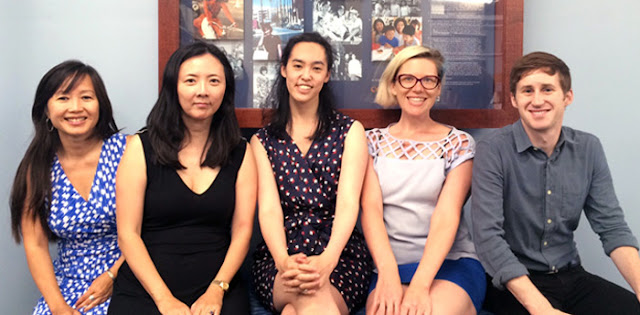 |
| These daughters of ranchman Joseph M. Chrisman took homesteads, timber claims and preemption claims in the Goheen Settlement. Pictured from left to right are: Harriet, Elizabeth, Lucie, Ruth in 1883. |
Words of Women Pioneers
The freedom and promise of the American West prompted many people to migrate in the 1800s. Beth Henley’s play, Abundance (Segerstrom Stage, Oct. 16-Nov. 15), follows the story of two women who come to the Wyoming Territory in the 1860s as mail-order brides and follows their epic adventure.
 |
| Woman and daughter gathering buffalo chips, American prairie 1850s |
“To make thousands pounds of butter every year for market ...to sew and cook and wash and iron; to bake and clean and stew and fry, to be in short a general woman drudge, and never a penny of my own was a hard lot,” wrote Abigail Scott Duniway, whose family traveled from Illinois to Oregon in the mid-1850s.
It wasn’t uncommon for women to handle heavier work: they chopped wood, hauled water, plowed, hoed and planted fields, managed small herds and other animals, and drove horses and other working animals.
 |
| Women in the 1880s performing their daily chores. |
In a letter to her family, Mary Jane Megquier described the small hotel that she ran with her husband: “I make the biscuit, then I fry the potatoes, then broil 2 pounds of steak and as much liver. . . . I bake six loaves of bread, then 4 pies, or a pudding, then we have lamb, beef and pork, baked turnips, beets, potatoes, radishes, salad, and that everlasting soup, every day. .. . I have cooked every mouthful that has been eaten. .. . If I had not the constitution of six horses I [should] have been dead long ago. .. . I am sick and tired of work . . . three nights a week I have to iron. I do not go to bed until midnight and often until 2 o'clock.”
The nearest neighbor to Anna Howard Shaw’s family was six miles away, and the nearest general store and post office was more than 30 miles away. It was hard work to set up a home in the middle of nowhere.
 |
| A woman homesteader in North Dakota. |
Wrote Mollie Dorsey Sanford: "[After a full day of work on the farm,] I feel stiff and lame tonight. Have raised my eyes to look into the glass. I see that Mollie Sanford [now] does not look as fair as Mollie Dorsey did one year ago. Mountain air has given her a browner tinge,” Mollie Sanford wrote.
 |
| Women carry milk cans at their farm near Topeka, c. 1890. |
But some independent women did carve out different lives—building and running hotels or saloons, establishing and running mills, serving as storekeepers, running ranches and other businesses. The residents in some areas accepted these entrepreneurs to varying degrees because of the harsh life that everyone faced, regardless of gender. Mary Ellen Todd, who moved west with her family in the 1850s, wrote that she felt “a secret joy in in being able to have a power that set things going.”
 |
| Martha Jane Cannary (Calamity Jane). |
Cannary learned her skills on the go. She wrote: “By the time we reached Virginia City I was considered a remarkable good shot and a fearless rider for a girl of my age.”
Shirley is said to have stated: “I am a friend to any brave and gallant outlaw.”
"My mother…was perfectly horrified when I began shooting and tried to keep me in school, but I would run away and go quail shooting in the woods or trim my dresses with wreaths of wildflowers,” wrote Mosey.
While the difficult life took a toll on women, many survived and thrived by adapting to the challenges and opportunities, building new lives from scratch, learning different skills and creating new bonds of family and friendship.
Learn more and buy tickets.
Here’s More About Women and the American West
- Branded, But Unbroken: Thirty-two tenacious women who left their mark on the Old West.
http://www.truewestmagazine.com/jcontent/history/history/history-features/7319-branded-but-unbroken - Women of the Wild West
http://www.pbs.org/opb/historydetectives/feature/women-of-the-wild-west/ - Wild Women of the West: Not all of them made their living as soiled doves.
http://www.truewestmagazine.com/jcontent/history/history/history-features/6356-wild-women-of-the-west - Women and the Myth of the American West
http://time.com/3662361/women-american-west/


























